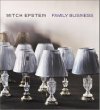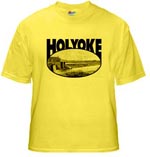by Laurel | January 24th, 2014
04 Aug 1891
Doctor Hewitt Talks of Himself
He Egotistically Makes a Bid For Newspaper Notoriety
Telling The Story of His Life
He Dictates To A Reporter a History of His Career As A Leader
of Society and a Man About Town
Dr. C. Ellsworth Hewitt, who disappeared from the city at the same time that Mrs. John O. Bowman, the handsome wife of the counselor of that name, took her departure, was consumed by an ambition to be known far and wide as the John Jacob Astor of Philadelphia.
Not long ago he said to a reporter who made his acquaintance in a hotel lobby: “I wish you would write me up as one of he social leaders of Philadelphia.”
Newspaper men meet all kinds of people but Hewitt’s sang-froid and cool cheek dazzled the reporter for a moment. When he recovered from the surprise he found his tongue in time to say, “Well, if you’ll elope with a woman or shoot yourself we may do something for you.”
“Perhaps I’ll elope,” said Hewitt in a significant manner. Hewitt has attained his desire as far as being written up goes, and as an evidence of his mountainous nerve, The Inquirer reproduces a story dictated by the slim doctor himself to one of its staff a short time ago. It is yet well remembered by many when a young woman just about to be married was crushed to death in the elevator of the Thackara building, on Chestnut Street above Fifteenth. Dr. Hewitt was called in to attend the case, and it was while pursuing his duty that the reporter met him. “You’ll have to come to my office some time soon, I have a very interesting piece of news to give you,” said the doctor. The newspaperman said he would.
Hewitt Tells His Own History
A few days after while conversing with a friend in the lobby of the Colonnade Dr. Hewitt came in hurriedly and tapping him on the shoulder said: “Come with me at once, I will give you that story now.” Visions of a big scoop floated before the reporter’s mind and he suffered himself to be led captive to the doctor’s apartments, 1529 Chestnut Street — now tightly closed. Seating himself upon a divan Dr. Hewitt said: “Now I will give you a history of my life and tell you some interesting things about myself.”
It was more of a reportorial frolic than anything else which led the newspaper men to make notes as the doctor eagerly unbosomed himself. The humor of the thing was too good to keep, and when the reporter went back to the office he and his fellows had a merry time reading Dr. Hewitt’s account of himself after the night’s work had ended and the lightning presses down in the basement were reeling of thousands of papers.
“Now you write this up as if some outside party was talking of me,” began Hewitt. “I want this thing done up in good shape.”
Then he related the following unique and egotistical story, which shows that Dr. C. Ellsworth Hewitt had a supreme confidence in his own personality and powers of attraction. Speaking a a third party he said: “Dr. Hewitt was born in New York City, where he belonged to a family as well known on the Continent as they are widely known in this country.”
As a matter of fact he was the adopted son of old Dr. Hewitt, of this city, who was known for many years as a physician of good reputation. He also claimed to be a nephew of ex-Mayor Hewitt of New York. His ancestors were all English gentlemen and in his youth he longed to be a professional man. He was early educated under a private tutor, while his family was in Europe. He received a degree in medicine in New York and also at the Medico-Chirurgical Hospital in this city. He also studied abroad.”
With the Air of a Prince
With the air of a prince, Hewitt went on to tell of his writings, saying: “He has attained an eminence as a young man as a writer upon surgical topics that most men would be glad to have at the age of 50. He has made brilliant strides in his profession, with which he is infatuated. A good authority said he attended more prominent patients than any doctor in Philadelphia. A well known union League man also remarked that “Dr. Hewitt always did the right thing at the right time.'”
This flowery self-praise was enough to raise the blush upon the unshaven cheek of the modest reporter, but Hewitt stood there as unconcerned as a statue and acted as if he were doing humanity a favor in regaling them with facts about his exalted self. “You see, I’m pretty well up for a young man,” he observed, and then continued, “I’ll tell you something about my personal appearance and my daily life.
“Dr. Hewitt is six feet high; he is light complexioned, has light blue eyes, nice hair and is a handsome man. He is slim but straight as an athlete and uses the gloves and foils like an expert. he is the best dressed gentleman in Philadelphia. His clothes are without fault. He has the good taste never to appear twice during the same week in the same suit of clothes.”
The reporter was like a man under a spell. Such colossal conceit it had never been his fate to run against. But Hewitt was in dead earnest and patronizingly said: “No doubt my personal appearance is partly due to my valet Bradshaw, who thinks there is no one like his master, and it is not likely he will ever want another.”
Pursuing his subject the doctor further related of himself: “He lives as but few men on this side of the water live. His stables are perfect.”
“His servants are dressed in full English livery” — the servant was a young chocolate colored man who was at one time an usher at the Chestnut Street Theatre, and wore the suit provided by the management.
“He has but very few intimate friends, but knows everybody worth knowing. he has a large income and a lucrative practice. His horses are the finest money could buy. His favorite is a Canadian Maltese, presented to him by a New York lady, and it is seventeen hands high. He has some splendid wagon and is always wanting something odd. His latest addition to his collection is one made like a brougham owned by the Prince of Wales and is the highest carriage in the country. It is furnished in dark green and line with goat skin and silk. He also has a dog cart, a tandem coach and other rigs” — no one ever accused him of owning more than one horse and a well-worn buggy.
Hewitt Stuck on Himself
By this time Hewitt was deeply interested in himself and, not deigning to notice whether the shafts of his nerves had killed the reporter, continued: “Dr. Hewitt has a small kennel of dogs. they are thoroughbreds and mastiffs. his favorite is Brutus, a huge mastiff” — the only dog he had and the one he dragged about when he first met Mrs. Bowman. “Brutus took the prize as the best bred mastiff pup in the country. Nealy all his clothes, hats and shoes come from the other side of the water. His shoes are ordered the color of his dogs, in order to harmonize.
“Dr. Hewitt walks like a gentleman, looks like a gentleman and acts like a gentleman. He is rather distinguished looking, his eduction abroad probably giving him that foreign air. He is seldom seen in public on foot, but daily goes the rounds in his carriage or on horseback. The doctor is well-known in the society circles of this city, New york and Boston. He is invited to everything going on here, although practically a new comer.
“He is not liked, as a rule, by men” — and here the superb faculty of self-appreciation reaches its climax — “but whether this is caused by jealousy or not we are not able to say. He is a general favorite with women, entertaining half a dozen at one time. He is not at all dull, but witty and full of life, the possessor of good sense. He spends a great deal of time in his apartments. His age is 25 — one half way between 20 and 30.
“Up to a few months ago he had a large country place at Tioga, but his wife died and he moved away. Now he poses as a single man.”
And this is the story of a man for whom handsome Mrs. Bowman, it is said, gave up husband, home, children and reputation.
A few weeks since a well-known broker knocked hm down and severely punished him in the Colonnade Hotel for impertinently pestering an estimable young lady with his attentions. There was a scene when the stalwart man of stocks and bonds stretched forth his arm and laid the doctor flat on the tiled floor.
Adapted from The Philadelphia Inquirer.








